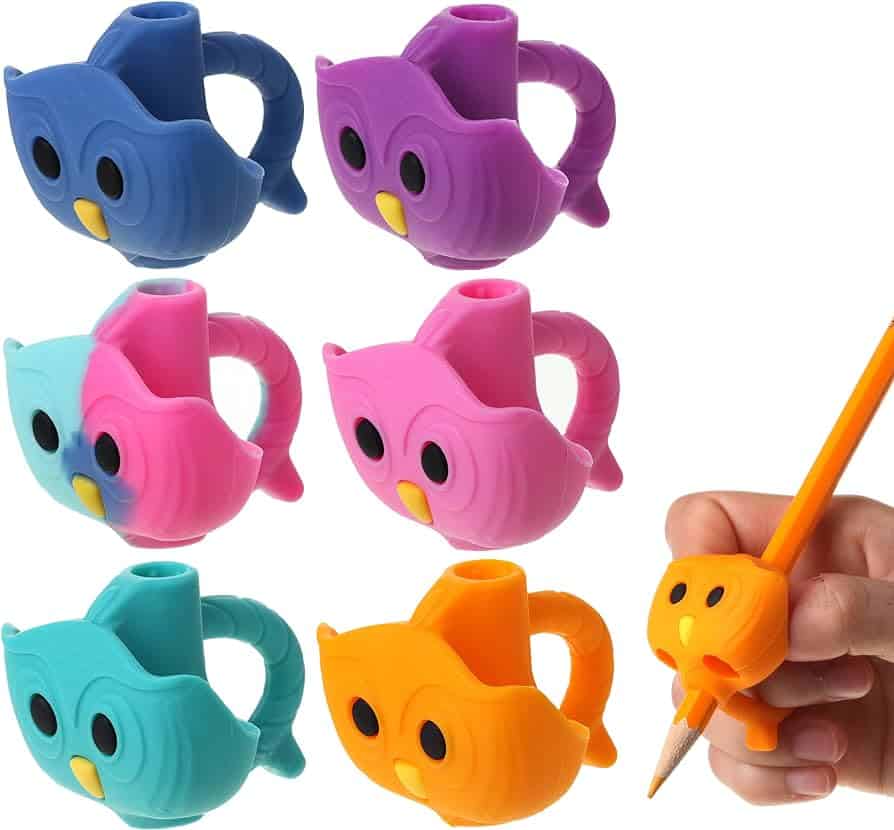Introduction to Pencil Grip Pencils for Little Learners
Hey there, super parents! Are you on a quest to help your little ones master the art of writing with ease and confidence? You’ve landed in the perfect spot! Let’s dive into the colorful and constructive world of pencil grip pencils. These aren’t just ordinary pencils – they’re your child’s sidekick in their journey to developing fine motor skills and perfecting that pencil hold. Ready to give your kiddos a helping hand? Let’s hop right in!
Why Pencil Grip Matters
Before we get into the details of these magical pencils, let’s chat about why a proper pencil grip is so crucial. It’s the foundation for clear, fatigue-free writing. Potty-training was a breeze compared to this, right? Fear not! With the right tools and tips, this milestone can be just as successful. A sturdy grip boosts control and helps those adorable scribbles transition into legible letters and beyond.
Choosing the Right Pencil Grip Pencil
Alright, superhero parents, choosing the right pencil grip pencil can be as daunting as picking the ripest watermelon at the grocery store—you know, the one that promises the sweetest, juiciest bites. Well, fear not: we’re here to make it as easy as pie (or watermelon!). From ergonomic designs to groovy grips, we’ll cover all the essentials to make sure you snag the best pencil for your little Picasso.
Types of Pencil Grips
Did you know that pencil grips are more than just a piece of rubber? They come in a variety of shapes and textures. Each design targets different aspects of holding a pencil—the ‘tripod’ grip, the ‘quadrupod’ grip, and the ‘adaptive’ grip. Who knew learning tools could have such cool names?
- Triangular Grips: These three-sided wonders are perfect for beginners. They naturally promote the correct tripod grip without any fuss.
- Cushioned Grips: For the kiddo who might press a bit too hard, cushioned grips are like a comfy pillow for their fingers, encouraging a gentler touch.
- Contoured Grips: Like a custom suit, contoured grips mold to the unique shape of each child’s fingers for a personalized feel.
But that’s not all! Keep scrolling as we explore some popular grip shapes and what makes them stand out in the world of handwriting development.
The Ergonomic Advantage of Pencil Grip Pencils
Let’s talk ergonomics—no, it’s not just for office chairs. When it comes to pencil grip pencils, ergonomics plays a star role. These well-designed buddies reduce strain on those tiny hands and encourage longer, happier writing sessions. No more sore fingers or frustrated kiddos!
So, as you soar into this adventure, remember that finding the right pencil grip pencil is all about trial, error, and lots of fun. Stay tuned, as we’ll uncover the mysteries of grip materials, the importance of grip size, and how to introduce pencil grips to your youngsters! Our goal is hands-on success for every spiral and curl in your child’s handwriting journey. Stick with us and watch that pencil dance across the page as if it’s got a mind of its own!
Grab your capes, because this is only the beginning. In our next segment, we’ll delve into the nitty-gritty of grip materials, sizes, and introduction methods that promise to turn the page to a new chapter in your child’s educational story.

Five Things Parents Should Know in Preparing for Pencil Grip Pencils
There’s a little more to pencil grips than meets the eye. As you prepare to embark on this handwriting escapade, there are a few important nuggets of wisdom you’ll want to pocket. Let’s unwrap these pearls of wisdom together, shall we?
- Start with Observation: Before rushing to purchase a grip, observe how your child naturally holds a pencil. This will guide you towards the grip type that best complements their current style and what may need fine-tuning.
- Size Matters: Pencils and grips come in various sizes. Tiny tots might need skinnier pencils with smaller grips, whereas older kids can handle chunkier options. It’s like Goldilocks’, you want the one that’s just right.
- Material Magic: Grips can be soft and squishy, firm, or even have a slightly tacky texture. Each material provides a different feedback and resistance level, affecting comfort and control.
- Practice Makes Perfect: Introducing a new grip means a learning curve. Patience is key. Allow time for your youngster to adapt, and be ready with high-fives for their efforts and achievements.
- Fun and Games: Think outside the box—use pencil grips with drawing, coloring, or playing games to build positive associations. Practice doesn’t have to be just about writing letters and numbers!
Understanding these core principles will pave the way for a smoother transition to effective pencil use. It’s not just a stick with some rubber—no, it’s a powerful learning tool that, with your guidance, will empower your child in the art of writing.
Picking the Perfect Pencil Grip: Top Considerations for Purchasing
Ready to pick out the ultimate pencil grip for your child? Here’s what to look for:
- Ergonomic Design: It should fit comfortably in your child’s hand and encourage a natural grip without forcing their fingers into place.
- Non-toxic Materials: Safety first! Ensure the grip is made from non-toxic, environmentally friendly materials. Kids will be kids, and anything can end up in their mouths!
- Visual Appeal: Bright colors or fun characters can make pencil grips more enticing to little ones. Writing time should be a blast, after all!
- Durability: Little ones aren’t always gentle. A sturdy grip that can withstand some wear and tear is a smart investment.
- Feedback from Other Parents: Look for reviews from other families. They can provide a wealth of insight and help you avoid the trial and error stage.
Introduction Strategies for Pencil Grips
Now that you’ve chosen a pencil grip, it’s time for the grand debut. How can you make this transition as smooth as butter? Follow these steps:
- Show and Tell: Demonstrate how to use the grip and let them see you writing with it. Modeling is a powerful tool in learning.
- Start with Short Sessions: Begin with brief periods of use to prevent frustration. Gradually increase the time as they become more comfortable.
- Positive Reinforcement: Celebrate their progress! Stickers, stamps, or a cheerful high-five can reinforce their hard work.
- Incorporate Variety: Use the grip for various activities, not just writing. It’ll help them adjust more quickly.
- Patience and Consistency: Be patient and offer consistent instruction and encouragement. Rome wasn’t built in a day, and pencil grips take practice!
Every child’s journey to mastering pencil grip is unique. With your loving guidance and these awesome pencil grip pencils, your child will be on their way to writing stories, solving math problems, and maybe even penning their first masterpiece. Just imagine the possibilities!
For more great fun click here. For more information see here
Disclaimer
The articles available via our website provide general information only and we strongly urge readers to exercise caution and conduct their own thorough research and fact-checking. The information presented should not be taken as absolute truth, and, to the maximum extent permitted by law, we will not be held liable for any inaccuracies or errors in the content. It is essential for individuals to independently verify and validate the information before making any decisions or taking any actions based on the articles.




